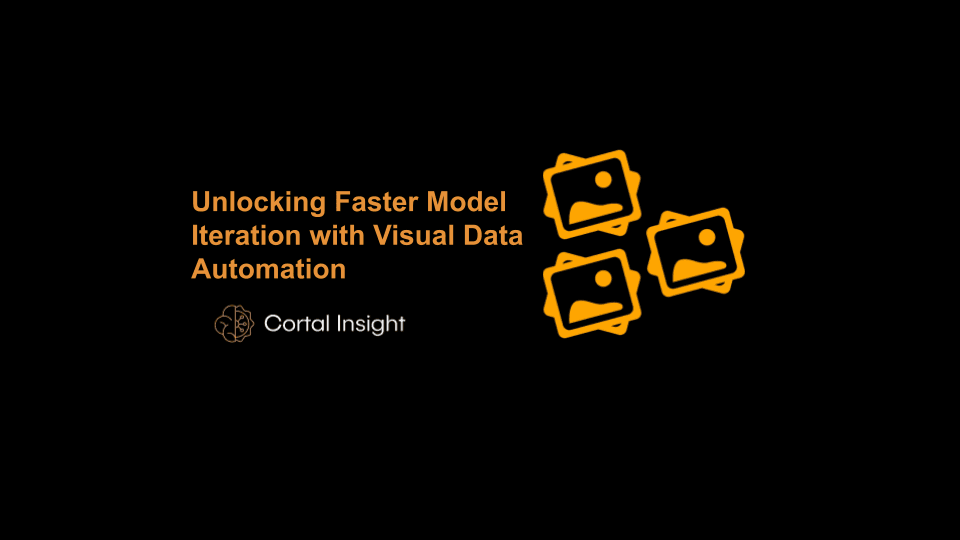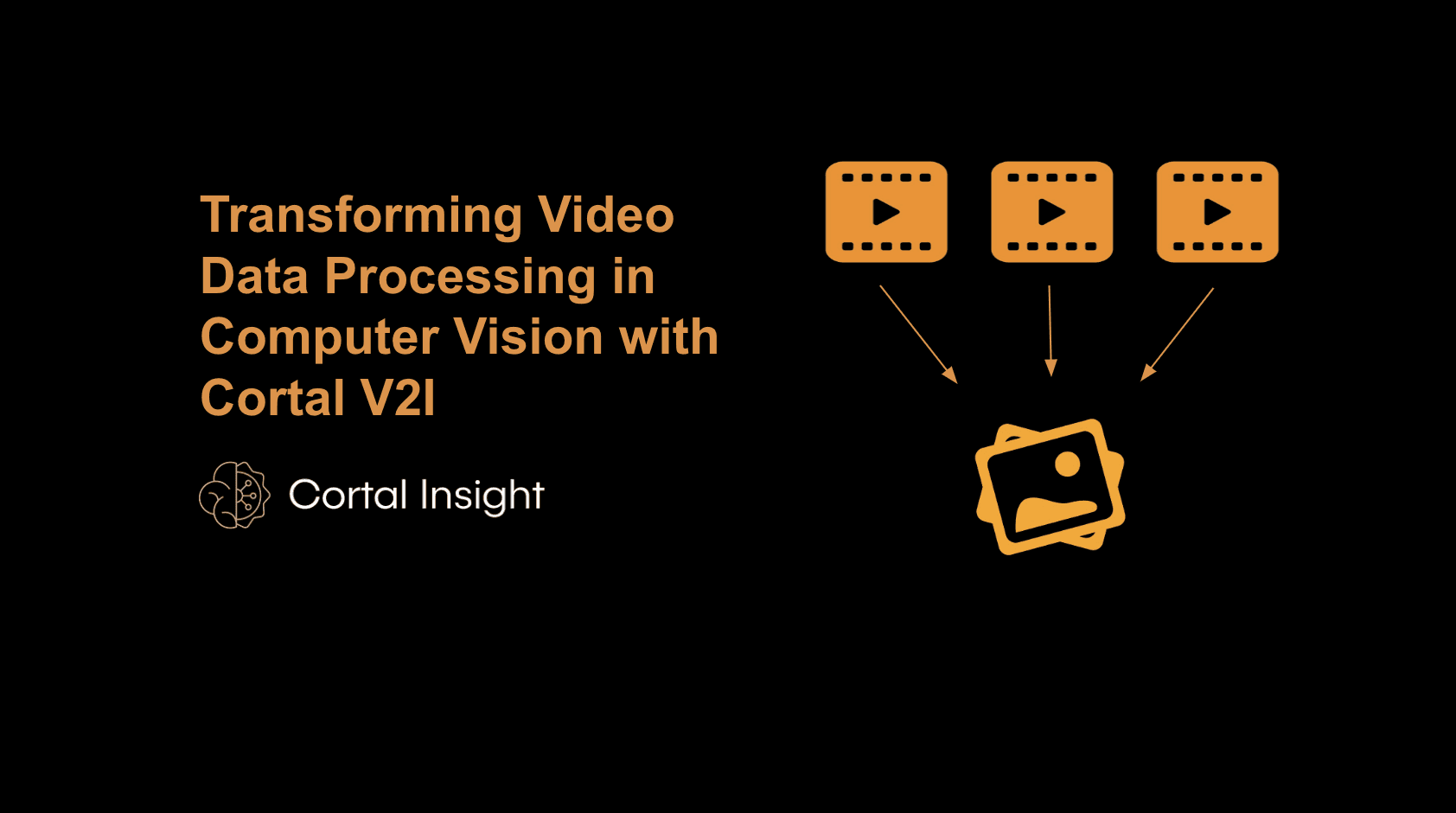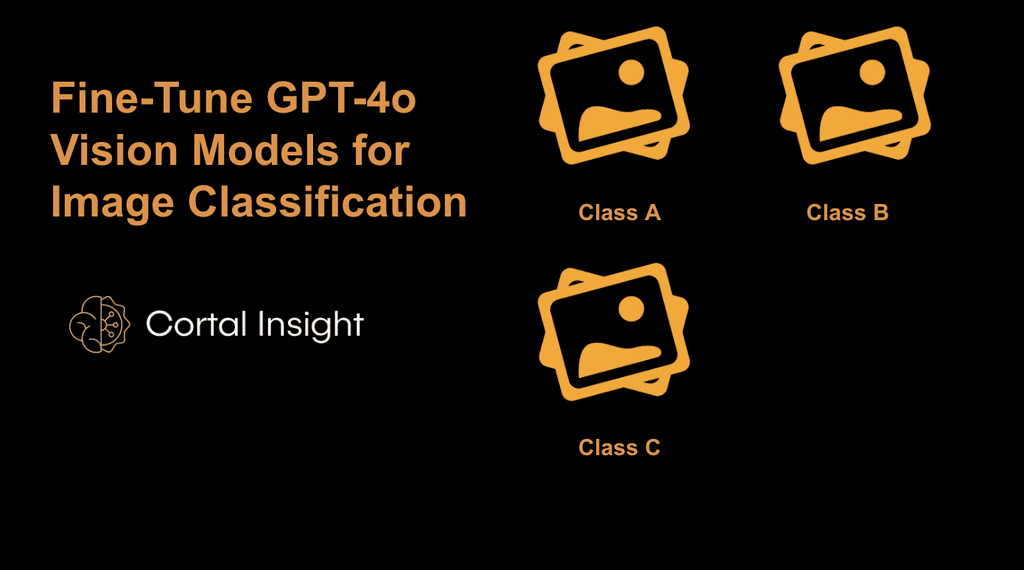Back
Unlocking Faster Model Iteration with Visual Data Automation
Enhance Machine Learning Efficiency with Automated Computer Vision Systems for Scalable and Accurate Data Processing
Oct 25, 2024


Let’s face it, machine learning teams spend an overwhelming amount of time on tasks that don’t directly drive innovation. From manually labeling datasets to cleaning and organizing visual data, these routine tasks eat away at precious hours, delaying model iteration and innovation.
But imagine a workflow where your team can focus almost entirely on building and refining models. Where visual data processing happens automatically, in the background, without you lifting a finger. Automation makes this possible.
By automating up to 40% of routine visual data tasks, you’re not just cutting down on time spent preparing data, you’re also improving the consistency and accuracy of your datasets.

The result? Faster, cleaner data means more productive experiments, quicker iterations, and ultimately, better-performing models. We’ll talk about five areas of automation for your Visual Datasets below:
Eliminating Bottlenecks in Data Preparation
Increasing Model Accuracy with Consistent Data and Automation
Scaling your Visual Data Handling
Automated Video Data Processing
Automating Machine Vision Quality Inspection and Data Audits
Here's how you can automate visual data tasks for your ML team:
1. Eliminate Bottlenecks in Data Preparation with Automated Machine Vision Systems
Manual data preparation in computer vision can significantly slow down your project. Tasks like labeling, cleaning, and augmenting visual data are prone to errors and delays. Implementing an automated machine vision inspection system eliminates these bottlenecks by streamlining these tasks.
This frees your team to focus on model experimentation, reducing the time spent on routine tasks. It’s a best practice to adopt tools that automate video data labeling and image pre-processing that cut down on manual intervention and enable faster model iteration.
2. Increase Model Accuracy with Consistent Data Using Automated Computer Vision
Inconsistent data often leads to poor model performance. By integrating an automated computer vision system, you ensure that your data is processed consistently and accurately, removing human error from the equation.
Clean, standardized data inputs result in higher-performing models. We recommend using automation tools that perform real-time quality checks during data processing to ensure uniformity in image datasets, enhancing model accuracy and reliability.
3. Scale Your Visual Data Handling Effortlessly with Automation
As the size and complexity of your datasets grow, automated machine vision inspection systems become essential for scalability. Manual processing can no longer keep pace with large-scale datasets. Automation allows your team to handle increasing volumes of video or image data effortlessly, maintaining speed without requiring additional manual labor.
To keep up with your growing datasets, implement machine vision software capable of processing large datasets, automatically detecting defects, and optimizing the flow of visual data to support more complex model development.
4. Faster Time to Market with Automated Video Data Processing
Automating repetitive tasks like video data processing and image annotation shortens your development cycle. This is especially important in industries where rapid deployment is crucial.
An automated computer vision system can quickly analyze and prepare visual data, speeding up the overall time to market. Leveraging automation to pre-process raw video data in real time allows your team to focus on model training and delivering results faster than competitors.

5. Focus on High-Value Tasks by Automating Machine Vision Quality Inspection
Your team should concentrate on high-value activities like optimizing models and fine-tuning experiments, not mundane data tasks. Automation in machine vision quality inspection allows your data scientists and machine learning engineers to move away from tedious data janitor work and focus on innovation.
Future-Proof Your ML Workflow with Automation in Computer Vision
As AI and ML evolve, the demand for quicker model iterations and accurate data processing are on the rise. By automating routine tasks like video data processing in computer vision, you’re preparing your team to stay agile and competitive in a fast-changing landscape.
It’s becoming imperative to invest in scalable, cutting-edge automation tools that integrate with your existing ML workflow. This investment ensures that you can handle future challenges in visual data processing without slowing down your development.
Ready to Unlock Faster Model Iteration? If you're ready to learn more about how automating visual data tasks can revolutionize your workflow, book a demo today and see how our solution can unlock your team's full potential.
About Us: Cortal Insight is the World's Most Automated Platform for Visual Machine Learning. We're on a mission to automate mundane data tasks for data scientists and machine learning engineers. Many of our clients have seen huge increases in time to experiment with their models and improve their model performance. Get a free data workflow audit here.
Let’s face it, machine learning teams spend an overwhelming amount of time on tasks that don’t directly drive innovation. From manually labeling datasets to cleaning and organizing visual data, these routine tasks eat away at precious hours, delaying model iteration and innovation.
But imagine a workflow where your team can focus almost entirely on building and refining models. Where visual data processing happens automatically, in the background, without you lifting a finger. Automation makes this possible.
By automating up to 40% of routine visual data tasks, you’re not just cutting down on time spent preparing data, you’re also improving the consistency and accuracy of your datasets.

The result? Faster, cleaner data means more productive experiments, quicker iterations, and ultimately, better-performing models. We’ll talk about five areas of automation for your Visual Datasets below:
Eliminating Bottlenecks in Data Preparation
Increasing Model Accuracy with Consistent Data and Automation
Scaling your Visual Data Handling
Automated Video Data Processing
Automating Machine Vision Quality Inspection and Data Audits
Here's how you can automate visual data tasks for your ML team:
1. Eliminate Bottlenecks in Data Preparation with Automated Machine Vision Systems
Manual data preparation in computer vision can significantly slow down your project. Tasks like labeling, cleaning, and augmenting visual data are prone to errors and delays. Implementing an automated machine vision inspection system eliminates these bottlenecks by streamlining these tasks.
This frees your team to focus on model experimentation, reducing the time spent on routine tasks. It’s a best practice to adopt tools that automate video data labeling and image pre-processing that cut down on manual intervention and enable faster model iteration.
2. Increase Model Accuracy with Consistent Data Using Automated Computer Vision
Inconsistent data often leads to poor model performance. By integrating an automated computer vision system, you ensure that your data is processed consistently and accurately, removing human error from the equation.
Clean, standardized data inputs result in higher-performing models. We recommend using automation tools that perform real-time quality checks during data processing to ensure uniformity in image datasets, enhancing model accuracy and reliability.
3. Scale Your Visual Data Handling Effortlessly with Automation
As the size and complexity of your datasets grow, automated machine vision inspection systems become essential for scalability. Manual processing can no longer keep pace with large-scale datasets. Automation allows your team to handle increasing volumes of video or image data effortlessly, maintaining speed without requiring additional manual labor.
To keep up with your growing datasets, implement machine vision software capable of processing large datasets, automatically detecting defects, and optimizing the flow of visual data to support more complex model development.
4. Faster Time to Market with Automated Video Data Processing
Automating repetitive tasks like video data processing and image annotation shortens your development cycle. This is especially important in industries where rapid deployment is crucial.
An automated computer vision system can quickly analyze and prepare visual data, speeding up the overall time to market. Leveraging automation to pre-process raw video data in real time allows your team to focus on model training and delivering results faster than competitors.

5. Focus on High-Value Tasks by Automating Machine Vision Quality Inspection
Your team should concentrate on high-value activities like optimizing models and fine-tuning experiments, not mundane data tasks. Automation in machine vision quality inspection allows your data scientists and machine learning engineers to move away from tedious data janitor work and focus on innovation.
Future-Proof Your ML Workflow with Automation in Computer Vision
As AI and ML evolve, the demand for quicker model iterations and accurate data processing are on the rise. By automating routine tasks like video data processing in computer vision, you’re preparing your team to stay agile and competitive in a fast-changing landscape.
It’s becoming imperative to invest in scalable, cutting-edge automation tools that integrate with your existing ML workflow. This investment ensures that you can handle future challenges in visual data processing without slowing down your development.
Ready to Unlock Faster Model Iteration? If you're ready to learn more about how automating visual data tasks can revolutionize your workflow, book a demo today and see how our solution can unlock your team's full potential.
About Us: Cortal Insight is the World's Most Automated Platform for Visual Machine Learning. We're on a mission to automate mundane data tasks for data scientists and machine learning engineers. Many of our clients have seen huge increases in time to experiment with their models and improve their model performance. Get a free data workflow audit here.
Let’s face it, machine learning teams spend an overwhelming amount of time on tasks that don’t directly drive innovation. From manually labeling datasets to cleaning and organizing visual data, these routine tasks eat away at precious hours, delaying model iteration and innovation.
But imagine a workflow where your team can focus almost entirely on building and refining models. Where visual data processing happens automatically, in the background, without you lifting a finger. Automation makes this possible.
By automating up to 40% of routine visual data tasks, you’re not just cutting down on time spent preparing data, you’re also improving the consistency and accuracy of your datasets.

The result? Faster, cleaner data means more productive experiments, quicker iterations, and ultimately, better-performing models. We’ll talk about five areas of automation for your Visual Datasets below:
Eliminating Bottlenecks in Data Preparation
Increasing Model Accuracy with Consistent Data and Automation
Scaling your Visual Data Handling
Automated Video Data Processing
Automating Machine Vision Quality Inspection and Data Audits
Here's how you can automate visual data tasks for your ML team:
1. Eliminate Bottlenecks in Data Preparation with Automated Machine Vision Systems
Manual data preparation in computer vision can significantly slow down your project. Tasks like labeling, cleaning, and augmenting visual data are prone to errors and delays. Implementing an automated machine vision inspection system eliminates these bottlenecks by streamlining these tasks.
This frees your team to focus on model experimentation, reducing the time spent on routine tasks. It’s a best practice to adopt tools that automate video data labeling and image pre-processing that cut down on manual intervention and enable faster model iteration.
2. Increase Model Accuracy with Consistent Data Using Automated Computer Vision
Inconsistent data often leads to poor model performance. By integrating an automated computer vision system, you ensure that your data is processed consistently and accurately, removing human error from the equation.
Clean, standardized data inputs result in higher-performing models. We recommend using automation tools that perform real-time quality checks during data processing to ensure uniformity in image datasets, enhancing model accuracy and reliability.
3. Scale Your Visual Data Handling Effortlessly with Automation
As the size and complexity of your datasets grow, automated machine vision inspection systems become essential for scalability. Manual processing can no longer keep pace with large-scale datasets. Automation allows your team to handle increasing volumes of video or image data effortlessly, maintaining speed without requiring additional manual labor.
To keep up with your growing datasets, implement machine vision software capable of processing large datasets, automatically detecting defects, and optimizing the flow of visual data to support more complex model development.
4. Faster Time to Market with Automated Video Data Processing
Automating repetitive tasks like video data processing and image annotation shortens your development cycle. This is especially important in industries where rapid deployment is crucial.
An automated computer vision system can quickly analyze and prepare visual data, speeding up the overall time to market. Leveraging automation to pre-process raw video data in real time allows your team to focus on model training and delivering results faster than competitors.

5. Focus on High-Value Tasks by Automating Machine Vision Quality Inspection
Your team should concentrate on high-value activities like optimizing models and fine-tuning experiments, not mundane data tasks. Automation in machine vision quality inspection allows your data scientists and machine learning engineers to move away from tedious data janitor work and focus on innovation.
Future-Proof Your ML Workflow with Automation in Computer Vision
As AI and ML evolve, the demand for quicker model iterations and accurate data processing are on the rise. By automating routine tasks like video data processing in computer vision, you’re preparing your team to stay agile and competitive in a fast-changing landscape.
It’s becoming imperative to invest in scalable, cutting-edge automation tools that integrate with your existing ML workflow. This investment ensures that you can handle future challenges in visual data processing without slowing down your development.
Ready to Unlock Faster Model Iteration? If you're ready to learn more about how automating visual data tasks can revolutionize your workflow, book a demo today and see how our solution can unlock your team's full potential.
About Us: Cortal Insight is the World's Most Automated Platform for Visual Machine Learning. We're on a mission to automate mundane data tasks for data scientists and machine learning engineers. Many of our clients have seen huge increases in time to experiment with their models and improve their model performance. Get a free data workflow audit here.

Kobe Conklin
Other articles you might like
Learn how to increase your productivity with calendars


